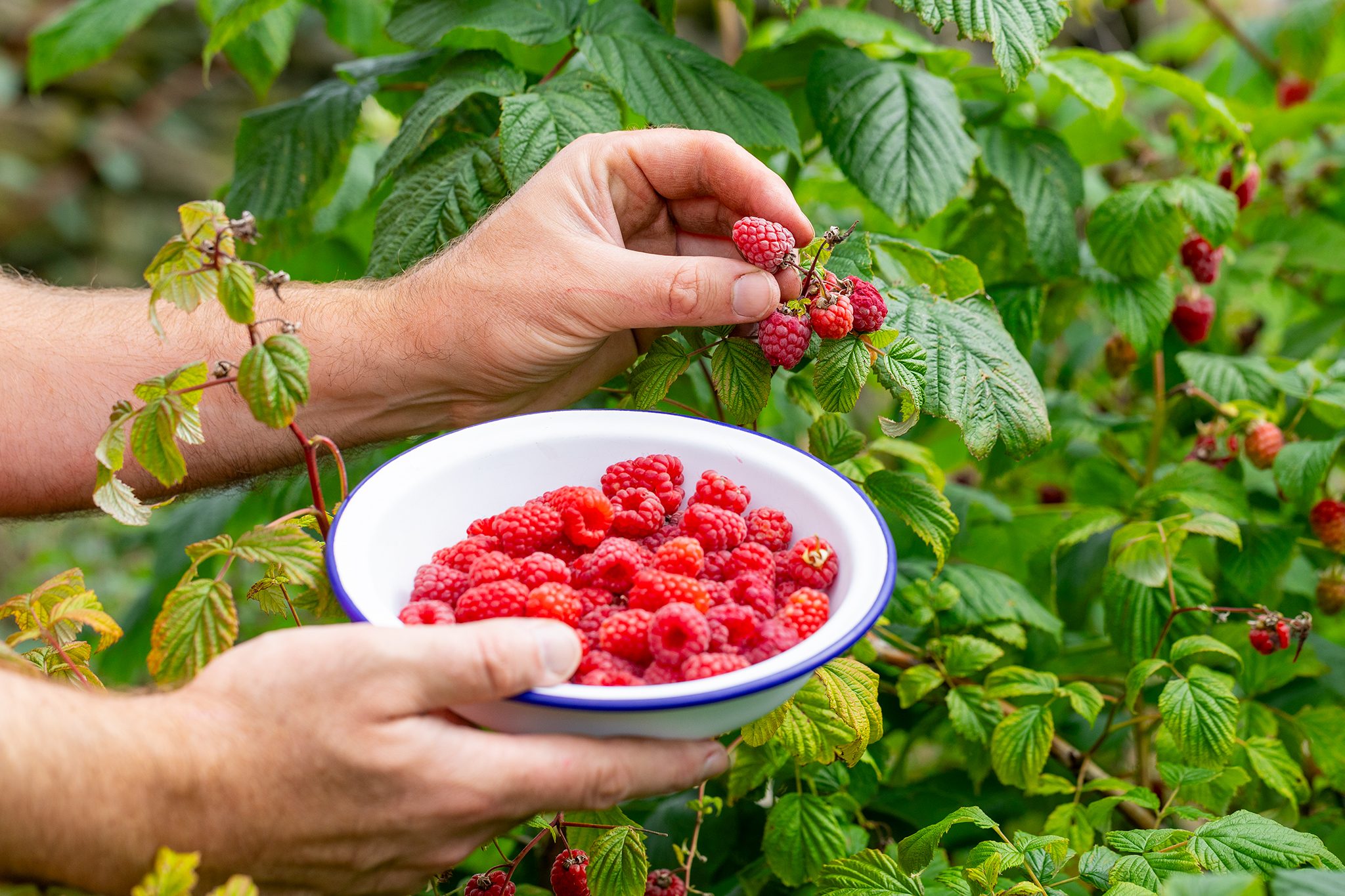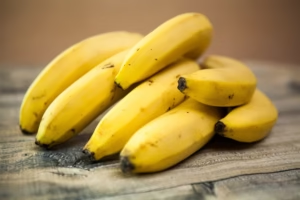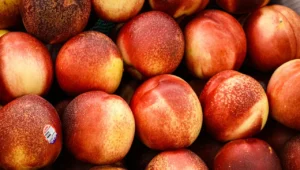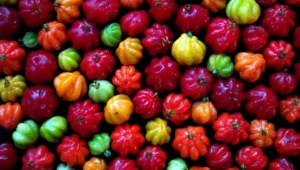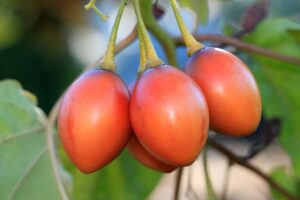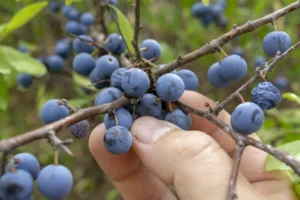How to Grow and Care for Raspberries: A Complete Guide
Raspberries are one of the most rewarding fruits to grow in your home garden. With their sweet-tart flavor and impressive nutritional profile, these berries can transform your backyard into a productive food source that provides delicious harvests year after year. Whether you have acres of land or just a small patio, raspberries can be grown successfully with the right knowledge and care.
Why Grow Your Own Raspberries?
Before diving into the how-to aspects, let’s consider why growing your own raspberries is worth the effort:
- Freshness: Store-bought raspberries simply can’t match the flavor of berries picked at peak ripeness.
- Cost-effective: Raspberry plants produce for many years, making them an economical choice.
- Variety access: Grow unique varieties not found in supermarkets.
- Organic control: You decide what inputs and treatments to use.
- Sustainability: Reduce packaging waste and transportation emissions.
According to the USDA Agricultural Research Service, raspberries are rich in vitamin C, manganese, and dietary fiber, while also providing valuable antioxidants that may help reduce inflammation and protect against disease.
Understanding Raspberry Varieties
Raspberries come in different types, each with unique growing characteristics:
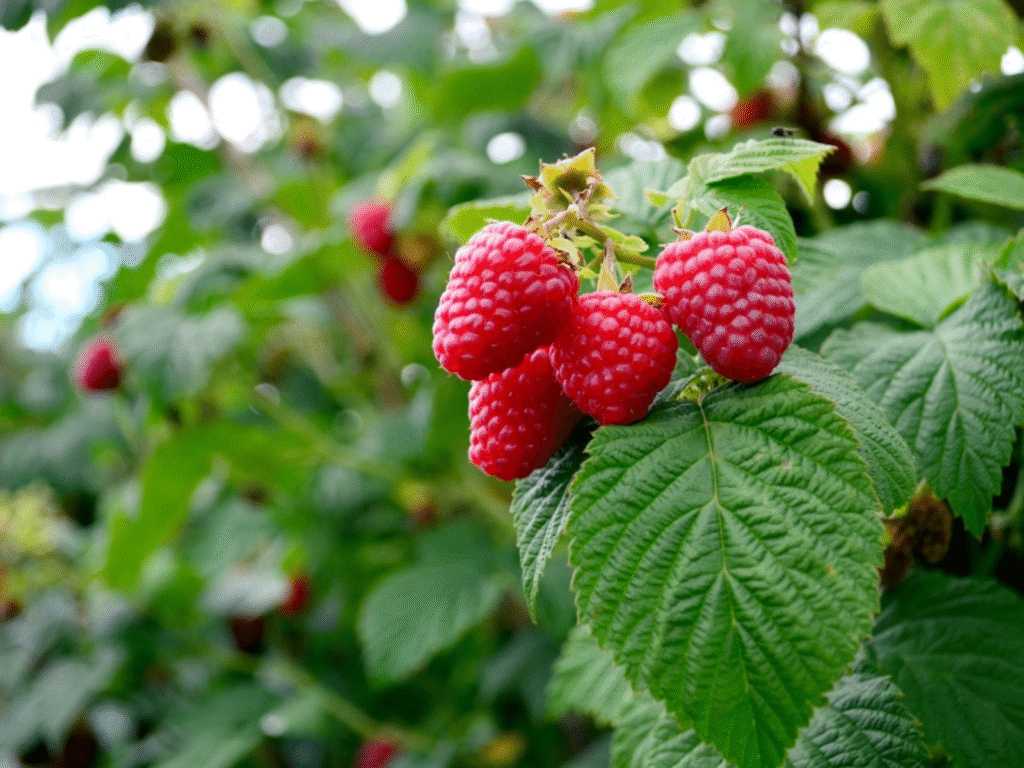
Summer-Bearing Raspberries
These traditional varieties produce one crop per year, typically in June or July in most parts of the US. They fruit on second-year canes (called floricanes).
- Red varieties: ‘Boyne’, ‘Latham’, ‘Nova’
- Yellow varieties: ‘Anne’, ‘Golden’
- Black varieties: ‘Jewel’, ‘Bristol’
- Purple varieties: ‘Royalty’, ‘Brandywine’
Ever-Bearing (Fall-Bearing) Raspberries
These varieties produce two crops per year—one in late summer/early fall on first-year canes (primocanes) and another the following summer on the same canes (now floricanes).
- Red varieties: ‘Heritage’, ‘Caroline’, ‘Autumn Bliss’
- Yellow varieties: ‘Fall Gold’, ‘Honey Queen’
Choosing the Right Growing Location
Regardless of whether you’re planting in the ground, raised beds, or containers, raspberries have some universal requirements:
Sunlight Requirements
Raspberries thrive with:
- Full sun (6-8 hours daily) for optimal fruit production
- Morning sun and afternoon shade in hotter climates (USDA zones 7-10)
Soil Conditions
The ideal soil for raspberries is:
- Well-draining with organic matter
- Slightly acidic to neutral pH (5.6-6.2)
- Deep and fertile
Space Considerations
Plan your raspberry patch with these spacing guidelines:
- Between plants: 2-3 feet
- Between rows: 8-10 feet
- Mature height: 4-6 feet tall (plan for trellising)
Planting Raspberries: Methods and Timing
When to Plant
Timing matters significantly when establishing raspberry plants:
- Spring planting: Best for most regions, especially colder climates (USDA zones 3-7)
- Fall planting: Works well in warmer regions (USDA zones 7-10)
- Dormant season: Ideal for bare-root plants
According to the USDA Plant Hardiness Zone Map, raspberry varieties grow successfully across zones 3-9, though different varieties have different cold tolerance levels.
How to Plant Raspberries in Garden Beds
Follow these steps for planting raspberries directly in the ground:
- Prepare the soil by removing weeds and incorporating 2-4 inches of compost.
- Dig a hole wide and deep enough to accommodate the roots without bending them.
- Position the plant with the crown (where stems meet roots) 1-2 inches below soil level.
- Backfill with soil and firm gently to eliminate air pockets.
- Water thoroughly to settle the soil around roots.
- Mulch around plants with 2-3 inches of organic matter, keeping it away from stems.
Growing Raspberries in Containers
Container growing is ideal for small spaces or patios:
- Choose a large container (at least 15-20 gallons) with drainage holes.
- Use quality potting mix designed for fruits and vegetables.
- Plant at the same depth as the nursery container.
- Install a small trellis or support structure.
- Place in a sunny location protected from strong winds.
- Water more frequently than in-ground plants, as containers dry out faster.
The National Institute of Food and Agriculture recommends dwarf varieties like ‘Raspberry Shortcake’ for container growing.
Starting Raspberries from Seed
While most gardeners start with plants, growing from seed is possible:
- Stratify seeds in moist sand in the refrigerator for 90 days.
- Sow in seed-starting mix in early spring.
- Maintain consistent moisture and warm temperatures (65-70°F).
- Transplant seedlings when they have several true leaves.
- Be patient – fruit production may take 2-3 years from seed.
Raspberry Care and Maintenance
Watering Requirements
Proper irrigation is crucial for raspberry plants:
- New plants: Keep consistently moist until established
- Established plants: 1-2 inches of water weekly
- Critical periods: Extra water during fruit development and drought
- Watering method: Drip irrigation or soaker hoses to keep foliage dry
Fertilization Schedule
Follow this fertilization timeline for optimal growth:
| Growth Stage | Timing | Fertilizer Type | Application Rate | Purpose |
|---|---|---|---|---|
| Planting time | Spring | Balanced organic (10-10-10) | 1/2 cup per plant | Establishment |
| Growing season | Early spring | High nitrogen (20-10-10) | 1 cup per 10 ft of row | Vegetative growth |
| Fruiting period | Early summer | Complete with micronutrients | As directed | Support fruit production |
| Post-harvest | Fall | Low nitrogen, high P-K | 1 cup per 10 ft of row | Prepare for dormancy |
The USDA Natural Resources Conservation Service recommends using compost and organic fertilizers when possible to build soil health while feeding plants.
Pruning Techniques
Pruning is essential for raspberry productivity and disease prevention:
Summer-Bearing Varieties
- Remove fruited canes to the ground after harvest
- Thin remaining canes in early spring to 4-6 strong canes per foot of row
- Top canes at 5-6 feet tall to encourage branching
Ever-Bearing Varieties
Two-crop method:
- Follow summer-bearing pruning guidelines
Single-crop method:
- Mow all canes to the ground in late winter
- Sacrifice summer crop for larger fall crop
Trellising Systems
Support structures help manage your raspberry patch:
- T-trellis: Two wires stretched between posts with a crossbar
- V-trellis: Angled supports with wires for easier harvest
- Simple post system: Individual posts for smaller plantings
- Fence-line method: Using an existing fence for support
Common Pests and Diseases
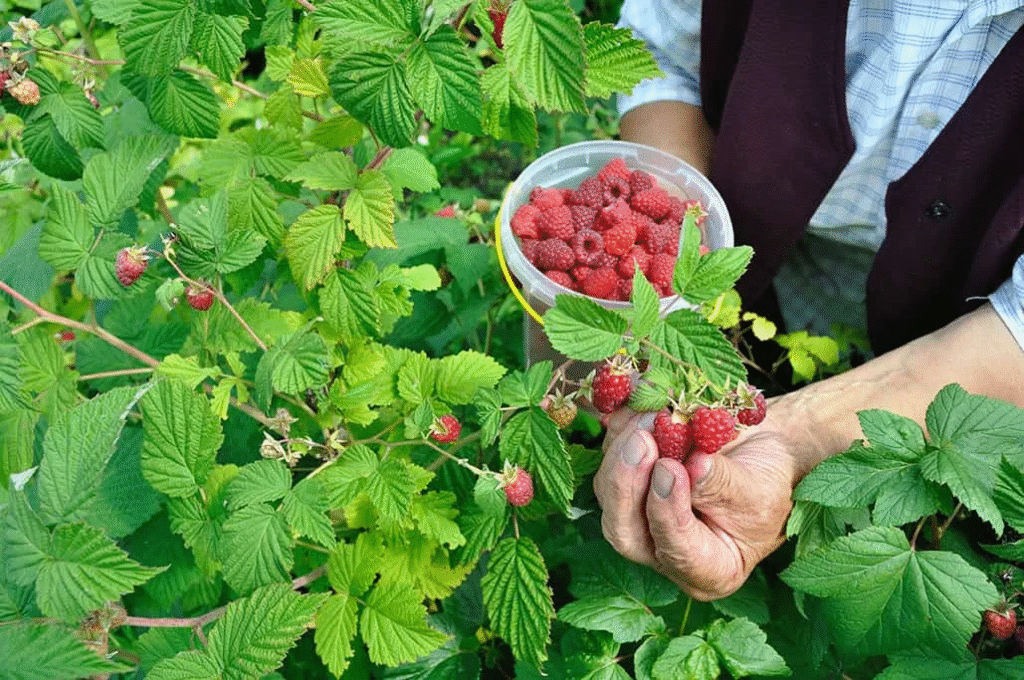
Pest Management
Monitor for these common raspberry pests:
- Japanese beetles: Handpick or use floating row covers
- Spotted wing drosophila: Harvest promptly and remove fallen fruit
- Raspberry crown borer: Remove and destroy infected canes
- Spider mites: Spray plants with strong water stream or insecticidal soap
The USDA Integrated Pest Management Program promotes using biological controls and cultural practices before chemical interventions.
Disease Prevention
Watch for these common raspberry diseases:
- Verticillium wilt: Plant resistant varieties in clean soil
- Raspberry mosaic: Remove infected plants and control aphids
- Powdery mildew: Ensure good air circulation and avoid overhead watering
- Root rot: Improve drainage and avoid overwatering
Harvesting and Using Your Raspberries
When and How to Harvest
For the best flavor and storage potential:
- Harvest in the morning when temperatures are cool
- Pick berries that detach easily from the receptacle
- Collect berries every 2-3 days during peak season
- Handle gently to avoid crushing
Storage Solutions
Keep your harvest fresh with these storage methods:
- Short-term: Refrigerate unwashed berries in a single layer for 2-3 days
- Medium-term: Freeze whole berries on a tray, then transfer to containers
- Long-term: Make preserves, jams, or dehydrate
Enjoying Your Harvest
There are countless ways to use fresh raspberries:
- Fresh eating: Straight from the garden
- Breakfast additions: Oatmeal, yogurt, smoothies
- Baking: Muffins, scones, cobblers
- Preserving: Jams, jellies, syrups
- Savory applications: Salad dressings, sauces for meat
Seasonal Care Calendar for US Regions
Winter (December-February)
- Prune according to variety
- Apply dormant oil sprays
- Plan for spring planting
- Order bare-root plants
Spring (March-May)
- Plant new raspberries
- Apply compost and fertilizer
- Install trellising
- Monitor for early pests
Summer (June-August)
- Harvest summer-bearing varieties
- Water consistently during dry periods
- Remove fruited canes
- Control weeds and mulch
Fall (September-November)
- Harvest ever-bearing varieties
- Apply compost for winter protection
- Cut back ever-bearing raspberries if using single-crop method
- Test soil and amend as needed
Troubleshooting Common Issues
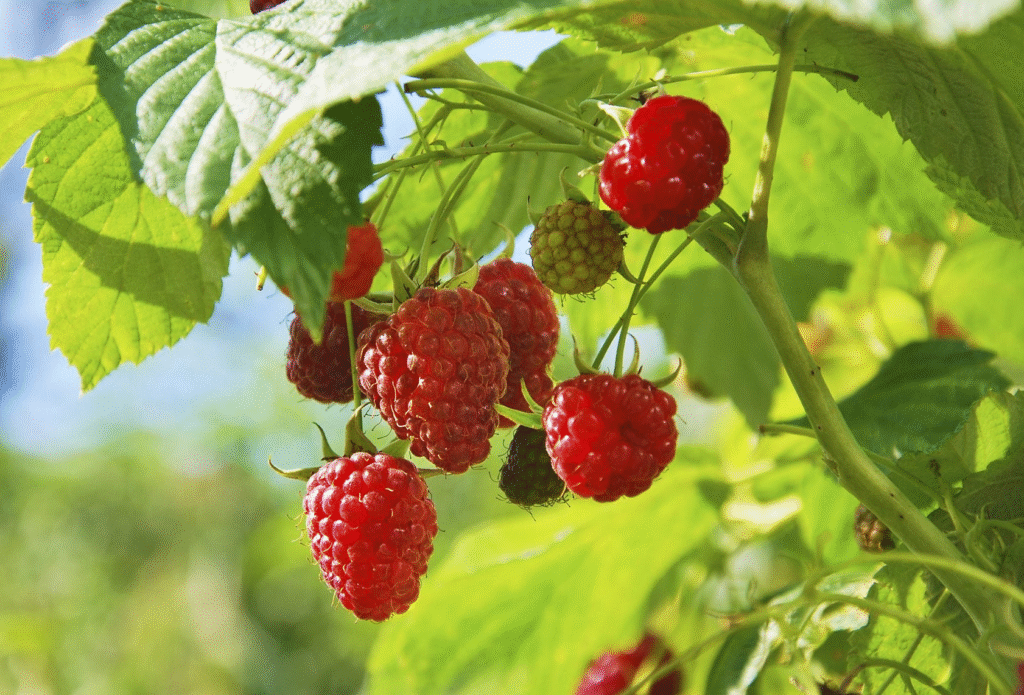
Poor Fruit Production
- Cause: Insufficient sunlight, improper pruning, poor pollination
- Solution: Ensure 6+ hours of sun, follow correct pruning techniques, plant pollinator-friendly flowers nearby
Yellow Leaves
- Cause: Nutrient deficiency, overwatering, or disease
- Solution: Test soil, adjust watering, remove infected plants
Crumbly Berries
- Cause: Poor pollination, virus infection, or insect damage
- Solution: Support pollinators, test for viruses, implement pest management
Conclusion
Growing raspberries requires some initial setup and ongoing maintenance, but few garden investments offer such delicious returns. By selecting appropriate varieties for your region, providing proper care, and addressing issues promptly, you can enjoy bountiful harvests of these nutritious berries for many years.
Whether you’re growing in a spacious garden bed or a container on your patio, the principles remain the same: give raspberries plenty of sun, consistent moisture, appropriate nutrients, and regular pruning. With these fundamentals in place, you’ll soon be enjoying the unmatched flavor of homegrown raspberries.
For more detailed information on specific raspberry varieties suited to your region, consult your local extension office through the USDA Cooperative Extension System.
